Discover Fermented Seasonings at Kagurazaka Hakko Bijindo
Sep 30,2021
Discover Fermented Seasonings at Kagurazaka Hakko Bijindo
Sep 30,2021
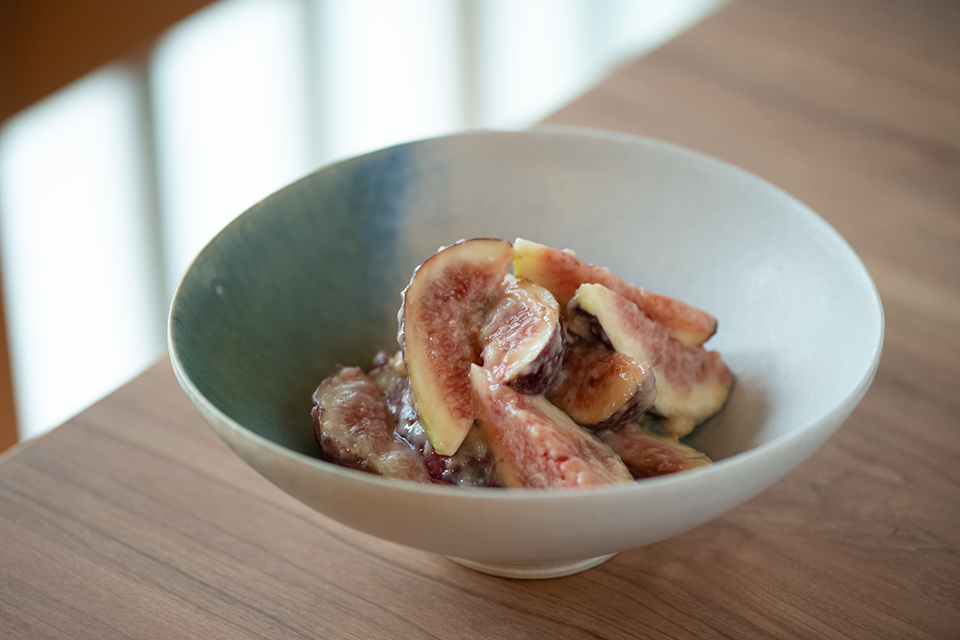

Many people turn their attention to fermented foods because of changes in their physical condition or because of pregnancy. One such person is Shimizu Shiori, who runs a fermentation cooking school in Tokyo’s Kagurazaka district. For this piece, she explained the allure of fermented foods that she discovered through her own experiences and shared recipes with fermented seasonings that are a breeze to incorporate into your busy schedule.
Kagurazaka is a Tokyo district with a history dating back to the Edo period (1603 to 1868) resplendent in genteel refinement and crammed with narrow, winding streets. In a residential area of the neighborhood lies Kagurazaka Hakko Bijindo [literally Kagurazaka Fermentation Beauty Hall], a cooking school specializing in fermented foods sited in an old, renovated house. Shimizu Shiori, the owner, greeted us dressed in a kimono. Originally from Kyoto, Shimizu started the school here in 2013.
“I’ve suffered from hay fever ever since I was little, but when I turned 20, I developed an allergy to food. When I got pregnant, I decided to change my diet in an attempt to improve my physical condition. That’s when I encountered the term gut health, which wasn’t well known at the time, and I began trying to incorporate more fermented foods into my life.”
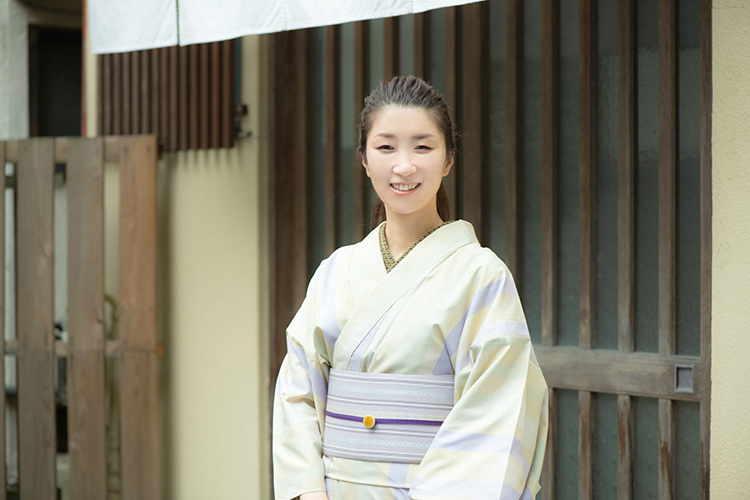
Shimizu Shiori, owner of Kagurazaka Hakko Bijindo, always teaches her classes while dressed in a kimono
Shimizu, who worked in the restaurant industry when she switched to fermented foods, had always had an interest in food and food ingredients.
“I love food. I earned a sommelier certificate while I worked, and it’s my nature to pursue my interests. My first fermentation experiment was to try to make miso by watching and imitating how others made it. I was amazed at how delicious the miso turned out and how rich an aroma it had. Making miso takes time, so watching it progress was both enjoyable and moving in a way for me.”
Inspired by the delicious taste of her miso, Shimizu began to study under the fermentation chef Fushiki Nobuaki to broaden her knowledge of fermented foods. Thanks to her diet of fermented foods, her problematic allergies got better and her health recovered. As a bonus, her skin cleared up and she lost weight. Because of her personal experiences with the beneficial effects of fermented foods, she started a cooking class, wanting to bring the attractions of fermentation to as many people as possible. Shimizu became increasingly engrossed in fermentation and began attending the Department of Fermentation Science at the Tokyo University of Agriculture to further her studies while also managing her school and raising her kids.
“I really enjoyed learning about fermentation from the chemistry side of things. For example, what is the difference between fermentation and decomposition. It turns out they exist side-by-side. My studies were incredibly useful in giving my students correct information.”
Shimizu’s top priority in her cooking classes is ensuring everyone, beginners and poor cooks alike, has fun cooking.
“I think that busy mothers who continually serve ready-made meals to their family eventually start to feel guilty. But if they are able to serve just one homemade dish on the daily dinner table, both the cook and the diners will feel gratified. I believe the sense of happiness you can get with just a little bit of effort is very important. In my cooking classes, in addition to teaching healthy and delicious cooking, I hope to be of help, through fermentation cooking, to people who have no time or who are not good at cooking. That’s why I emphasize simplicity so much. And this is where fermented seasonings come in handy. By just mixing fermented seasonings in with other ingredients, you can quickly create a delicious dish.”
An increasing variety of fermented seasonings have appeared in recent years — miso and soy sauce obviously, but also items like salted koji [rice malt] and soy sauce koji. At Kagurazaka Hakko Bijindo, however, there were rows of bottles of fermented seasonings we had never seen before. When asked for her go-to fermented seasonings, Shimizu gave us the following four recommendations.
“I recommend salted koji as a substitute for salt, hishio as a substitute for soy sauce, amazake [a sweet drink made from fermented rice] as a substitute for sugar, and onion hishio, which is made from onions and koji, for a flavor almost exactly like consommé. Hishio is a traditional seasoning handed down for generations that is most common in western Japan. Made from barley and bean koji, it has more umami components than miso or soy sauce and is rich in protease, a proteolytic enzyme that excels at tenderizing meat. Hishio is the foundational seasoning I use in my cooking classes.”
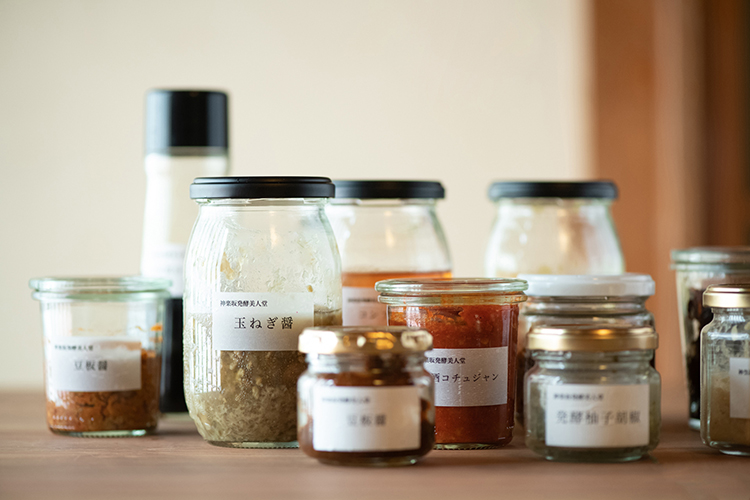
The wide variety of fermented seasonings featured in Shimizu’s cooking classes
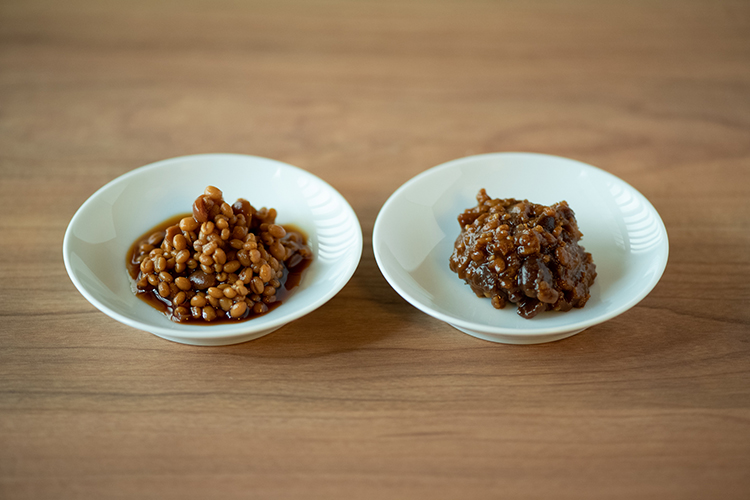
Hishio is made by adding soy sauce to barley and bean koji — the beans’ shapes are still present in the hishio on the left after five days; after two weeks, the hishio fermentation has progressed as shown on the right
Shimizu’s mission is to make it easier to get into fermentation and cooking and to popularize healthy and delicious foods that are simple to prepare. This is why, in addition to her classes, she produces kits and original products that simplify creating fermented seasonings and fermented foods at home. During the course of developing these products, she was energized by her encounters with producers around the country.
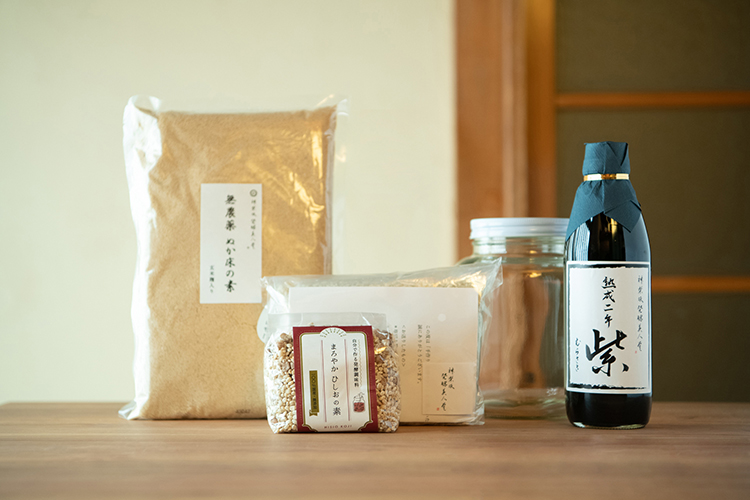
Shimizu sells original products, such as homemade hishio kits, online
“What I learned while developing my products is that the seemingly straightforward process of making soy sauce and koji and their personalities are actually very diverse. I visited producers who have been keeping age-old traditional production methods alive for more than a 100 years and farmers who take the utmost care in growing their crops. I was fortunate to find some truly wonderful ingredients. For example, I discovered a soy sauce that has been brewed exclusively in wooden barrels for decades on an island in the Seto Inland Sea, as well as koji made using koji mold that has been handed down for generations. Having come in touch with the craftsmanship of these discriminating producers, I want more people to know how splendid these traditional techniques and skills are. These experiences have driven me to be more meticulous as well.”
Shimizu shared recipes for two delicious dishes that can be prepared in no time with fermented seasonings.
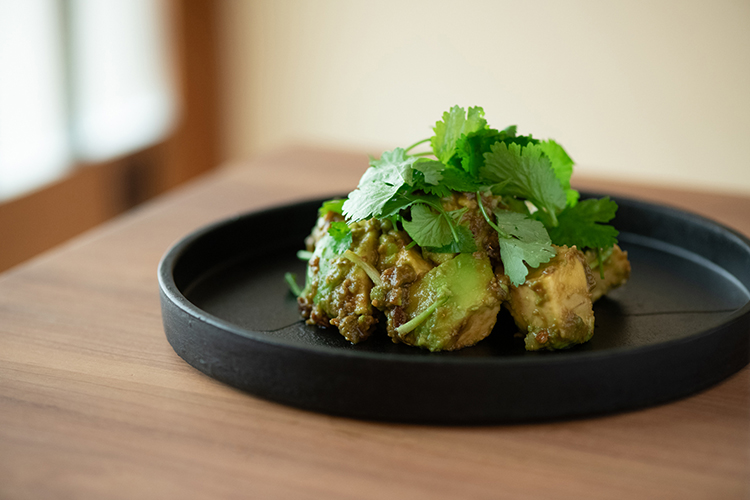
The perfect drink snack, this dish uses sansho-zuke [a seasoning made from pickled sliced green chilies, koji, and soy sauce], which have the distinctive pungent spiciness of green chilies. The coriander and sesame oil add an oriental flavor, and the combination of hishio and sansho-zuke is delectable with octopus and other seafood.
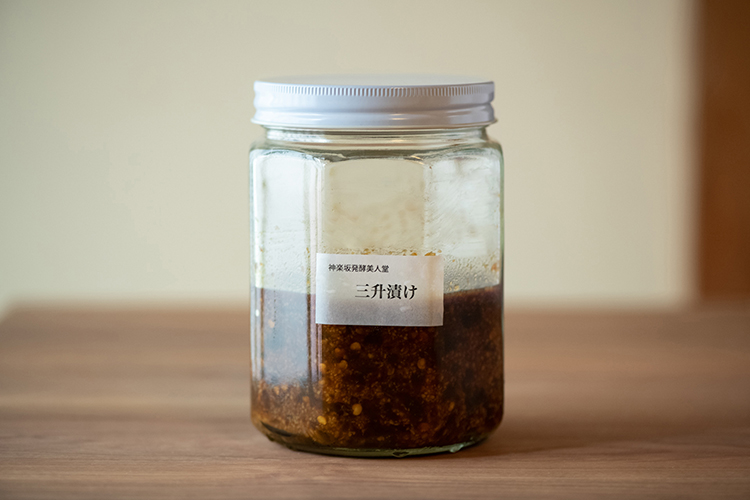
Sansho-zuke is made by pickling green chilies, koji, and soy sauce in a 1:1:1 ratio, to create a fermented seasoning with the distinctive crisp and pungent spiciness of green chilies
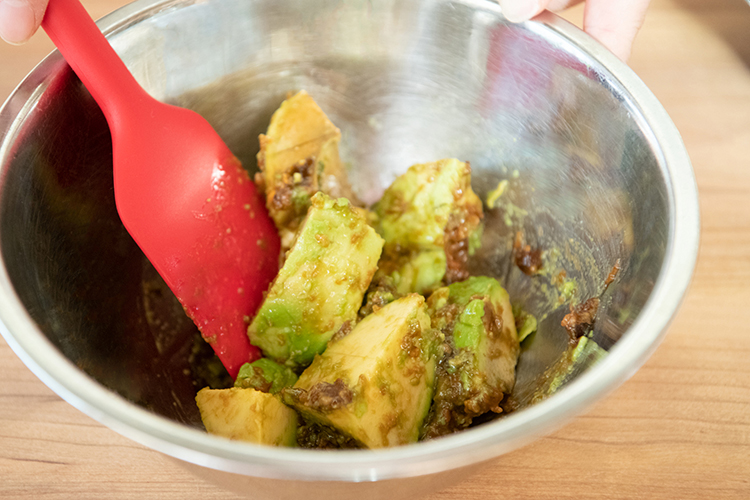
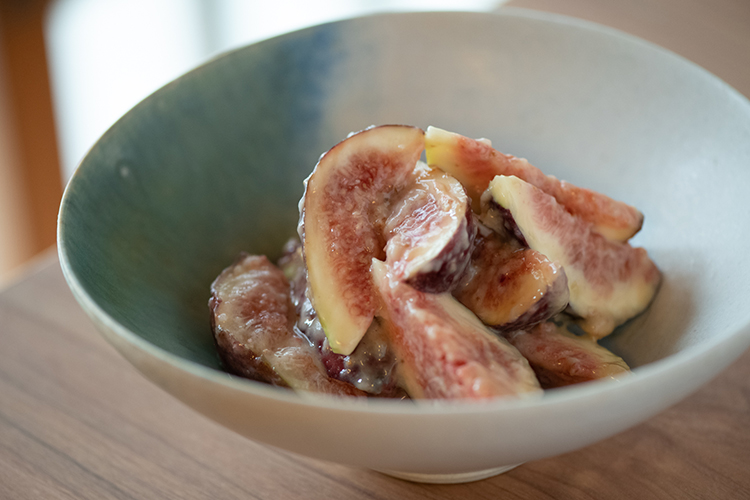
This dish uses amazake as a seasoning substitute for sugar. Amazake has a milder sweetness than sugar and is full of umami and nutrition. It goes perfectly with figs, peaches, and other fruits. This dish pairs well with a crisply chilled white wine (Shimizu recommends Gewurztraminer, which has a robust, florid flavor).
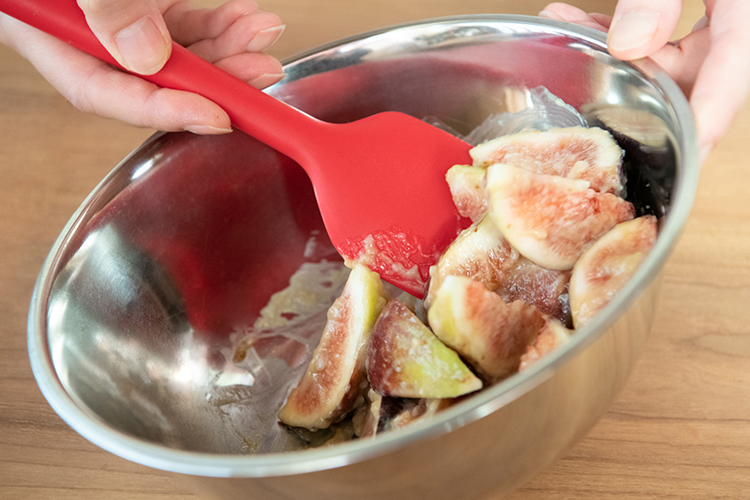
All it takes is one homemade dish to enrich a dinner table. Shimizu’s recipes bring surprise with their unexpected pairings. This is undoubtedly a skill she picked up from her experience as a sommelier, where she analyzed the taste of wines in detail and suggested food pairings. Her first book, Fermented Cooking Basics: Exceptional Tastes Even Beginners Can Make (Asahi Shimbun Publications), is packed with discoveries and easy-to-prepare dishes that will delight your body and soul.
Why not try adding some fermented seasonings into your daily life?
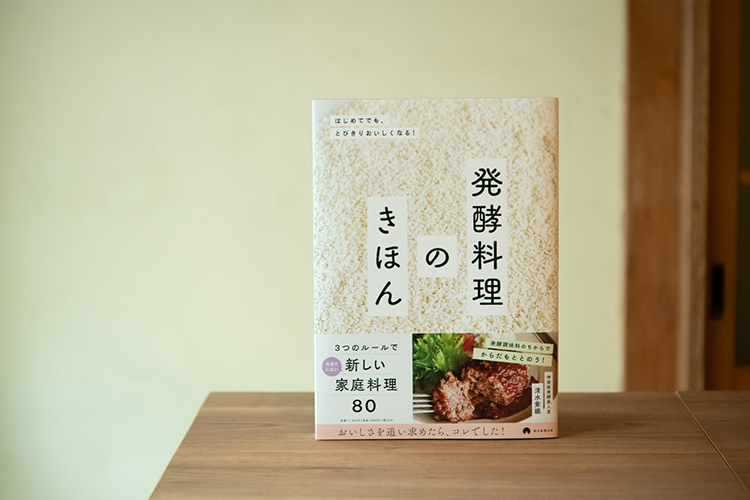
Shimizu’s first book — Fermented Cooking Basics: Exceptional Tastes Even Beginners Can Make (Asahi Shimbun Publications) — provides detailed explanations that are easy to follow even for fermentation beginners. It’s the perfect book for people wanting to reacquaint themselves with fermentation too.

In her search to improve her physical condition and gut health due to allergies and a pregnancy, Shimizu discovered fermented foods and experienced their benefits firsthand. She studied under fermentation chef Fushiki Nobuaki and opened Kagurazaka Hakko Bijindo, a cooking school specializing in fermented foods, in 2013 to promote the benefits of fermented foods to more people. She enrolled in the Department of Fermentation Science at the Tokyo University of Agriculture to further her study of fermentation. In addition to operating her school, she is currently involved in fermented food brands. She has attracted attention from TV, magazines, and other media outlets, and in September 2021 published her first book, Fermented Cooking Basics: Exceptional Tastes Even Beginners Can Make (Asahi Shimbun Publications).
Kagurazaka Hakko Bijindo Instagram page
https://www.instagram.com/hakko_bijin/?hl=ja